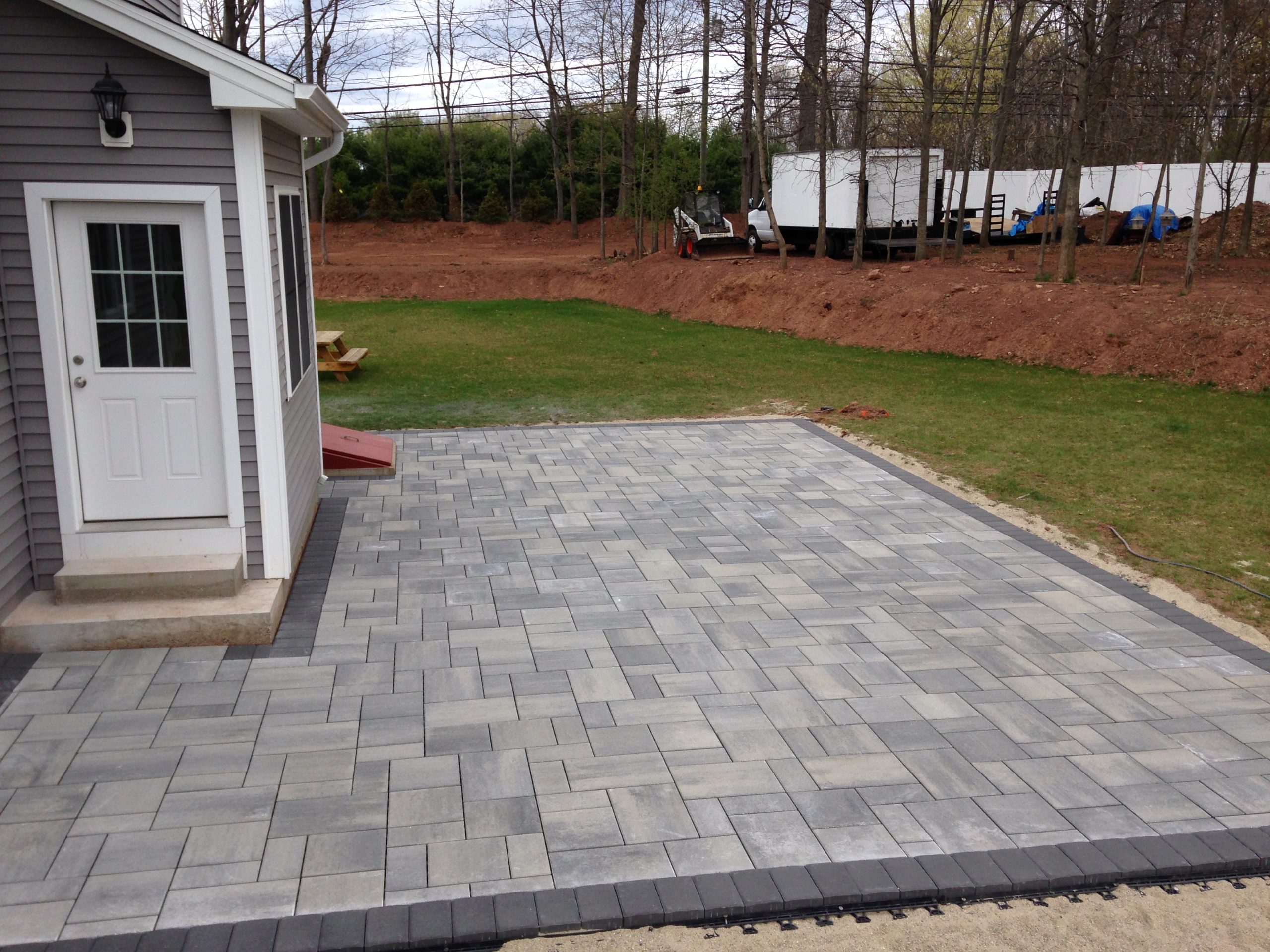Well, you decided it was time for your outdoor space to level up. Good call! A well-designed patio can transform your backyard into the perfect place to grill, sunbathe, or simply pretend you’re on vacation. Before you can dream about your first outdoor dinner, you must choose concrete patio pavers.
There are so many options that choosing the right one can be overwhelming. Don’t worry! We’re here to guide you through it step by step.
1. Consider Your Style
Firstly, what’s your vibe? Going for a sleek and modern vibe or a rustic, cottage-core dream? Your patio concrete pavers should match the style of your house as well as the style of your landscape. Here’s their quick breakdown:
- Large Patio Pavers—Ideal for a more clean, modern aesthetic. They create a seamless, expansive feel and minimize joints.
- Patio 16 x 16 Aggregate Pavers—A functional option that provides visual texture with a durable, non-slip surface.
- Brick Pavers—Timeless and always stylish. Ideal for classic or antique-inspired porches.
- Natural Stone Pavers—If you’re looking for that ageless, classy vibe, consider travertine, limestone, or flagstone.
2. Durability and Maintenance
Pavers aren’t alike. A couple of pavers are able to resist the wind and rain, but many others probably require more work in support. Here’s who you need to know to find out.
- Concrete Patio Pavers: Durable, low-maintenance, and available in various textures and finishes.
- Large Patio Pavers: reduce the number of joints, making them easy to clean and maintain.
- Patio 16 x 16 Aggregate Pavements: are highly resistant to wear and tear, making them ideal for areas with high traffic.
- Bricks: are durable, although they may last a little longer and possibly develop moss or weeds in the cracks.
If you’re living in a place of extreme weather, make certain your paving stones are capable of adjusting to the temperature without cracks.
3. Think About Budget
Yes, the budget. The crucial (albeit irritating) segment of any construction undertaking. Paver’s monetary value is subject to material and installation costs. There is a general dislocation here.
- Concrete Patio Pavers: Budget-friendly ($3–$10 per square foot)
- Large Pavers for Patio: Mid-range ($5–$15 per square foot)
- Patio 16 x 16 Aggregate Pavers: Affordable and durable ($4–$12 per square foot)
- Natural Stone: Premium pricing ($10–$30 per square foot)
If you know how to do it yourself, you can save money by putting it in yourself. Only for a couple of heavy lifts does he stay organized!
4. Installation and DIY Factor
Compared to other people, several pavers are easier to install than others. If you’re a do-it-yourself fan, you have to choose interlocking concrete pavers since they’re easy to put in place. In order to avoid the development of an overgrown area, large patio pavers require appropriate preparation of the soil.
Always ensure proper foundation prior to installation of your pavers. Preventing sinkage and ensuring long-term stability of the groundwork.
5. Slip Resistance and Comfort
If you are systematically planning to walk around barefoot (which, permit ’ s remain honest, we all love to do ), imagine how pleasant your pavements will be underfoot.
- Patio 16 x 16 Aggregate Pavers: Textured surface provides excellent grip and slip resistance.
- Large Pavers for Patio: Fewer seams mean a smoother, more comfortable feel underfoot.
- Concrete Patio Pavers: Versatile, but choose a non-slip finish if installing near a pool.
6. Color & Pattern Options
You’d like a garden that starts with a concrete patio paver, available in a rainbow of colors, from the basic to the current grey.
You can travel with a simple layout, such as a stack chemical bond (straight line), or you can get fancy with a herringbone or basketweave design. Large patio pavers are perfect for minimal, modern designs with a fine finish.
7. Environmental Impact
Assuming you are environmentally conscious, deliberate permeable patios and solid pavements which allow water to seep rather than overflow. They’re very good at blocking puddles and helping with drainage. Recycling material pavers are another green option to minimize carbon emissions.
Conclusion
Choosing the correct patio real pavers doesn’t have to be scary. Consider roundabout your manner, budget, and how much you’re willing to do. If you’re looking for a smooth, large patio paver, a strong 16 ten 16 aggregate paver, or a powerful solid patio paver, your patio is going to turn into an MVP in your backyard.
So drink a cold drink, remove the shop paver option, and get ready to turn your outdoor area into something truly dramatic!

